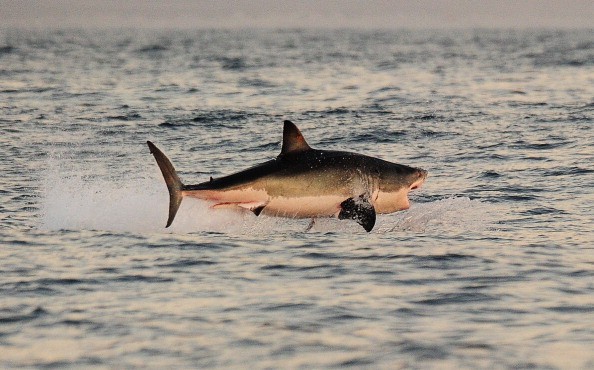A massive great white shark stole 100-pound tuna from a Hawaii fisherman. A great white shark approached the boat of Nick Morris - the fisherman - while he was fishing 15 miles off Honolulu County for yellowfin tuna.
It took the shark only seconds to rip the tuna from Morris' line and dragged it 30 to 40 feet below the surface.
Morris revealed the red mark on his hand where the fishing line was dragged from his hand in an interview with KHON2.

At first glance, Moris noticed that "the whole [fish] was gone" and the line had been "chopped from the top."
South Africa, Australia, New Zealand and the North Atlantic and Northeastern Pacific are typical habitats for great whites. They are extremely rare close to Hawaii.
Observers are baffled as to why these fish from Mexico and California occasionally make their way to the waters of Hawaii. They may be drawn to Hawaii's humpback whale breeding season between November and April since great whites are known to feast on whale carcasses during this time.
The shark reappeared along the 27-foot fishing boat five minutes after taking the catch. Morris estimated the shark's length to be between 17 and 19 feet, according to the broadcaster.
How Big Can a Great White Shark Grow?
Great white sharks have been observed to grow up to 20 feet long, however this is quite uncommon. Between 15 and 16 feet is the usual length of an adult great white shark, as per Newsweek.
Morris was initially concerned the shark was a whale shark due to its enormous size. As the world's largest and longest fish, this one may measure up to 39 feet in length.
"I seen big sharks but not that big, like two weeks ago, we had a 12-foot shark eat one of our fish next to the boat, but it's normal," Morris told KHON2. "It was wide. I was telling my friend whatever happens, do not fall in because he just ate a 100-pound ahi no problem at all, and he still came back he probably wants more."
This was Morris' second experience with a great white despite fishing for decades.
Animals Great White Prey on
Carl Meyer, a member of the shark research team at the Hawaii Institute for Marine Biology, saw a video of Morris' encounter with the sharks on KHON2.
The great white's slightly pointed snout, a common feature of the species, Meyer told KHON2. While whale sharks can only eat shrimp, fish and plankton, the great white's teeth are designed to take down larger prey like tuna. The ease with which the great white grabbed the fish was also a giveaway, Meyer added.
Due to of their rapid decline, great white sharks are classified as a vulnerable species. Its fins and teeth are sought after for sport fishing as trophies, but the species is also targeted for its meat.
For more news, updates about great white sharks and similar topics don't forget to follow Nature World News!
© 2025 NatureWorldNews.com All rights reserved. Do not reproduce without permission.





